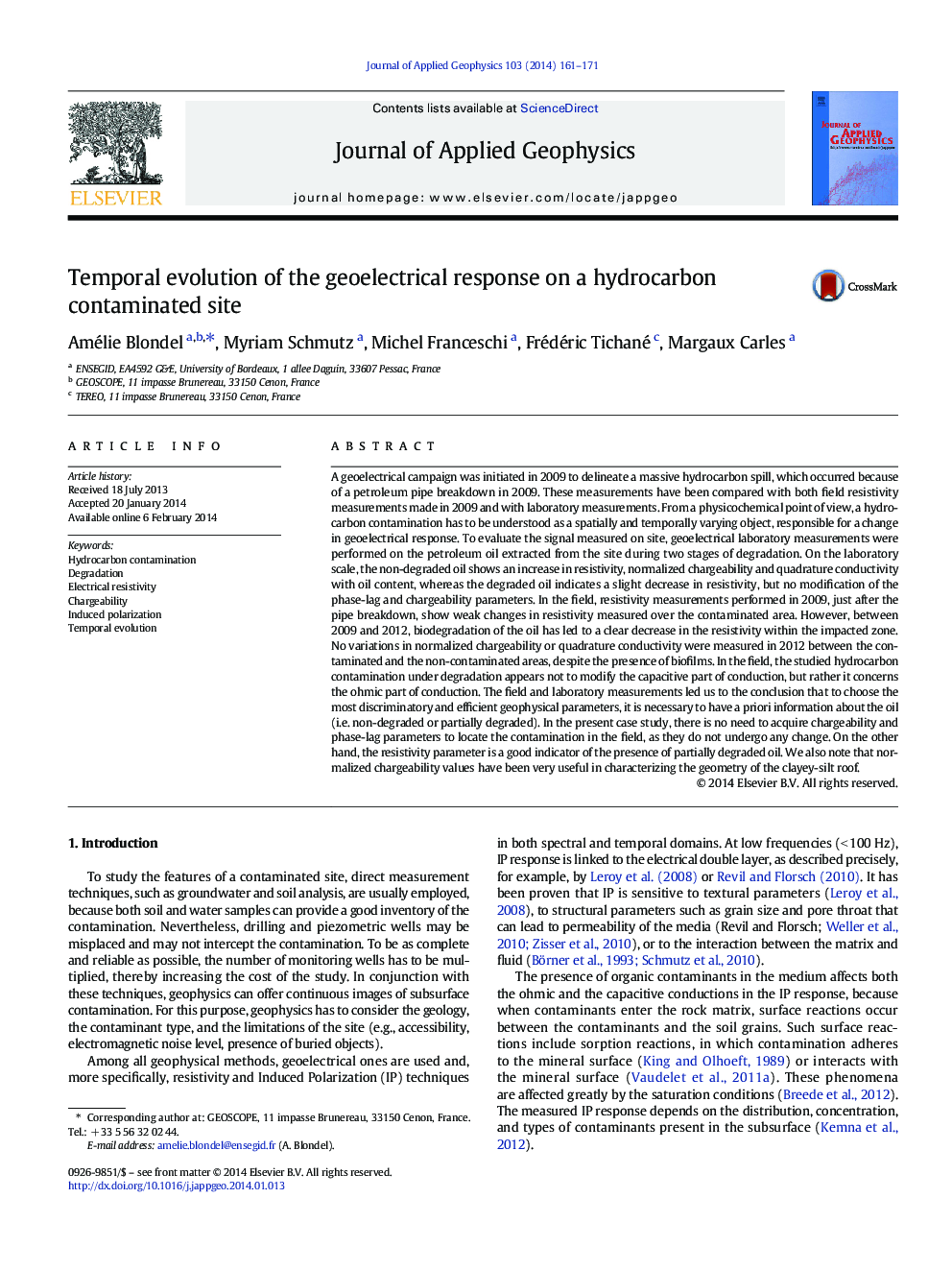| کد مقاله | کد نشریه | سال انتشار | مقاله انگلیسی | نسخه تمام متن |
|---|---|---|---|---|
| 4740305 | 1641148 | 2014 | 11 صفحه PDF | دانلود رایگان |
• SIP laboratory measurements on a petroleum oil at different states of biodegradation
• In situ temporal evolution of the resistivity response of the hydrocarbon contamination
• In situ influence of petroleum oil under biodegradation on the SIP response
A geoelectrical campaign was initiated in 2009 to delineate a massive hydrocarbon spill, which occurred because of a petroleum pipe breakdown in 2009. These measurements have been compared with both field resistivity measurements made in 2009 and with laboratory measurements. From a physicochemical point of view, a hydrocarbon contamination has to be understood as a spatially and temporally varying object, responsible for a change in geoelectrical response. To evaluate the signal measured on site, geoelectrical laboratory measurements were performed on the petroleum oil extracted from the site during two stages of degradation. On the laboratory scale, the non-degraded oil shows an increase in resistivity, normalized chargeability and quadrature conductivity with oil content, whereas the degraded oil indicates a slight decrease in resistivity, but no modification of the phase-lag and chargeability parameters. In the field, resistivity measurements performed in 2009, just after the pipe breakdown, show weak changes in resistivity measured over the contaminated area. However, between 2009 and 2012, biodegradation of the oil has led to a clear decrease in the resistivity within the impacted zone. No variations in normalized chargeability or quadrature conductivity were measured in 2012 between the contaminated and the non-contaminated areas, despite the presence of biofilms. In the field, the studied hydrocarbon contamination under degradation appears not to modify the capacitive part of conduction, but rather it concerns the ohmic part of conduction. The field and laboratory measurements led us to the conclusion that to choose the most discriminatory and efficient geophysical parameters, it is necessary to have a priori information about the oil (i.e. non-degraded or partially degraded). In the present case study, there is no need to acquire chargeability and phase-lag parameters to locate the contamination in the field, as they do not undergo any change. On the other hand, the resistivity parameter is a good indicator of the presence of partially degraded oil. We also note that normalized chargeability values have been very useful in characterizing the geometry of the clayey-silt roof.
Figure optionsDownload as PowerPoint slide
Journal: Journal of Applied Geophysics - Volume 103, April 2014, Pages 161–171
